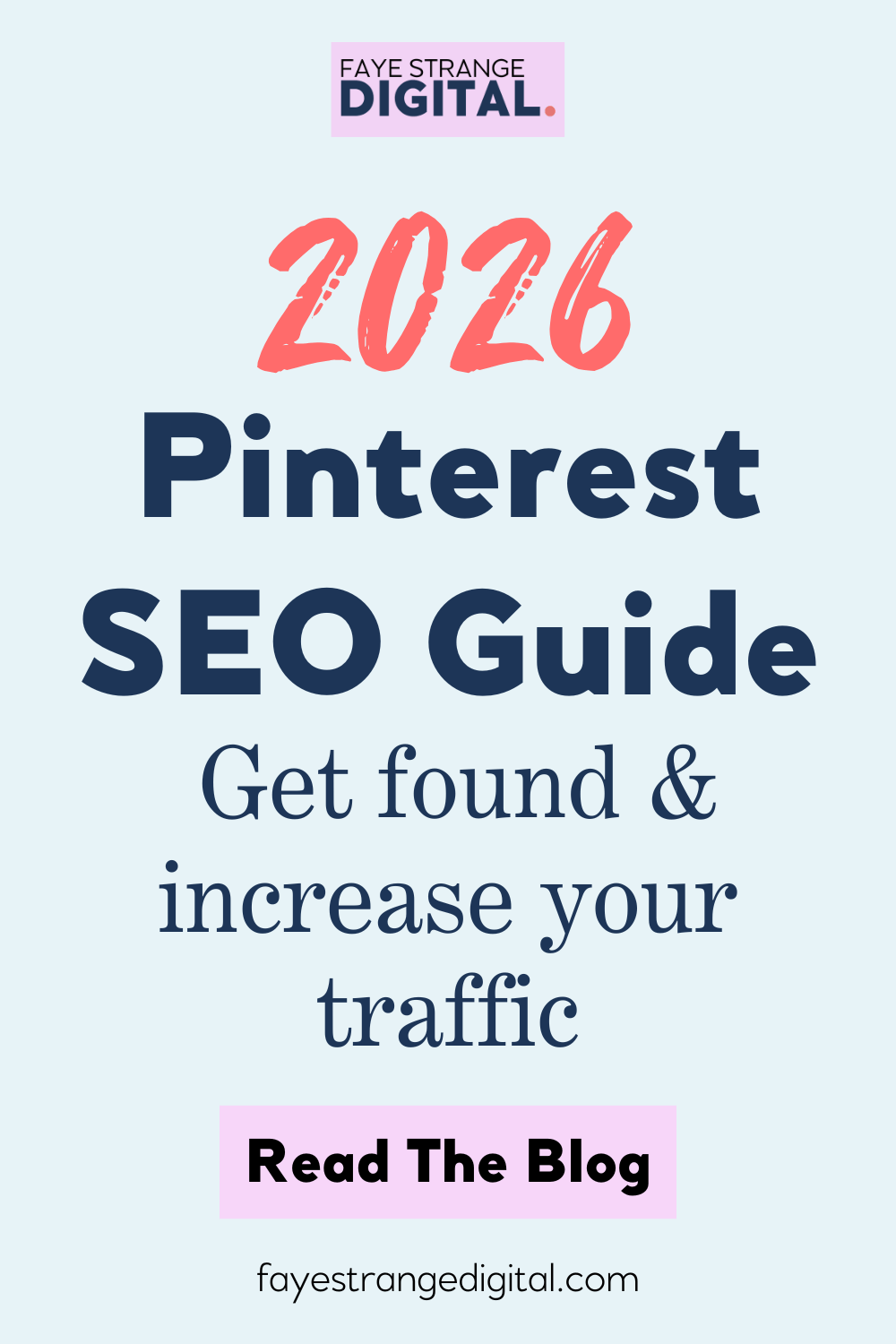Pinterest SEO Guide 2026: Get found and drive traffic
Some links on this site are affiliate links, meaning I may earn a small commission at no extra cost to you. I only recommend products I trust and use myself. Thank you for supporting my content!
If you’ve been wondering how to get more Pinterest traffic in 2026, the answer lies in mastering Pinterest SEO. Pinterest isn’t a typical social media platform, it’s a powerful visual search engine. And when you understand how to optimise your profile, boards, and pins for Pinterest search, your content can keep working for you long after you’ve pinned it.
In this guide, you’ll learn how Pinterest SEO works, where to use Pinterest keywords, and how to optimise your account so your pins get discovered... not just this month, but for months (or even years) to come.
What is Pinterest SEO (and why it matters in 2026)
Pinterest SEO means optimising your Pinterest content to appear in search results when users are actively looking for ideas, inspiration, or products.
In 2026, this matters more than ever. The Pinterest algorithm has become increasingly focused on search intent, rewarding creators who use relevant Pinterest keywords and post consistent, high-quality pins.
Pinterest isn’t about going viral for a day, it’s about building long-term visibility. With proper Pinterest optimisation, your content can show up again and again for the right audience.
How Pinterest SEO works: search intent & algorithm basics
To make the most of Pinterest SEO, it helps to understand how the Pinterest algorithm works.
Pinterest’s algorithm uses several ranking signals:
Keywords: Help Pinterest understand what your content is about.
Engagement: Saves, clicks, and close-ups show Pinterest your pin is valuable.
Freshness: Pinterest prioritises new, relevant content that leads to active pages.
Relevance: Pins that closely match what people are searching for will appear higher in Pinterest search.
When you combine these elements with strategic Pinterest optimisation, you’re giving your pins the best possible chance to show up in front of your ideal audience, and drive ongoing Pinterest traffic!
Where to use Pinterest keywords for maximum visibility
Knowing how to use Pinterest keywords is key to effective Pinterest optimisation. Keywords tell the Pinterest algorithm what your pins, boards, and profile are about.
Here’s where to place them:
Profile name and bio: Include your niche and a few targeted Pinterest keywords naturally.
Board titles and descriptions: Use clear, keyword-rich names that describe what users can expect.
Pin titles: Write compelling, descriptive titles that include your main Pinterest keyword. (Check out my Pinterest Content Generator to help you with this!)
Pin descriptions: Add 1 or 2 secondary keywords and a short call to action. (Again, my Pinterest Content Generator can help you with this!)
Text on pin images: Pinterest can read this too, it reinforces your topic for better SEO.
💡Keep it natural. Keyword-stuffing can confuse the Pinterest algorithm and reduce your reach.
How to find Pinterest keywords that actually work
You don’t need fancy tools to find the best Pinterest keywords, Pinterest gives you everything you need:
Use the Pinterest search bar: Start typing a topic and note the auto-suggested terms. Those are real Pinterest keywords users are searching for right now.
Pinterest Trends tool: Go to trends.pinterest.com to explore what’s trending and when interest peaks.
Your analytics: Check which pins already bring in impressions and clicks, that’s what the Pinterest algorithm is responding to!
The goal is to blend Pinterest SEO with natural keyword placement, helping Pinterest connect your content with users who are ready to click, save, and visit your website.
How Pinterest SEO connects to Google SEO (and why it’s Evergreen)
Here’s where things get exciting: Pinterest SEO and Google SEO work hand-in-hand.
Your Pinterest optimisation doesn’t just help you get found on Pinterest, it also supports your visibility on Google.
Pinterest pins often appear in Google image results, which means you can capture double the traffic when your content ranks well on both platforms.
That’s why Pinterest SEO is one of the most powerful forms of evergreen marketing. A well-optimised pin can drive Pinterest traffic for months or years, feeding a steady stream of visitors to your blog, freebie, or shop without relying on social media algorithms.
Common Pinterest SEO mistakes (and easy fixes)
Even small tweaks can make a big difference to your Pinterest SEO results.
Here are a few common mistakes and how to fix them:
❌ Using broad, generic keywords
✅ Choose long-tail Pinterest keywords that match search intent.
❌ Skipping board descriptions
✅ Add short, keyword-rich summaries to help the Pinterest algorithm understand your boards.
❌ Linking to irrelevant pages
✅ Make sure every pin links to a valuable, related blog post or product.
❌ Inconsistent pinning
✅ Even one or two new pins a day helps your Pinterest SEO and keeps your content fresh.
Small improvements in Pinterest optimisation can help your content show up more often, build trust with Pinterest, and bring you more consistent Pinterest traffic.
Ready to optimise your Pinterest SEO the right way?
If you’re ready to simplify your Pinterest optimisation and start seeing real results, grab my free Pinterest Starter Pack.
You’ll learn how to apply Pinterest SEO step-by-step; from keyword placement to profile setup, so your content gets found by the right people.
Pin Me!
Was this blog post helpful? Pin this blog to one of your boards to share it with your community and read it again later. I appreciate every single pin and share that I receive. 🧡

Grab Your Free Pinterest Starter Pack for Beginners
This free bundle helps you understand the platform, plan your content, and grow visibility for your business, even if you’re brand new.
What to Pin Cheat Sheet
Pinterest A–Z Glossary
Pinterest Visibility Checklist





